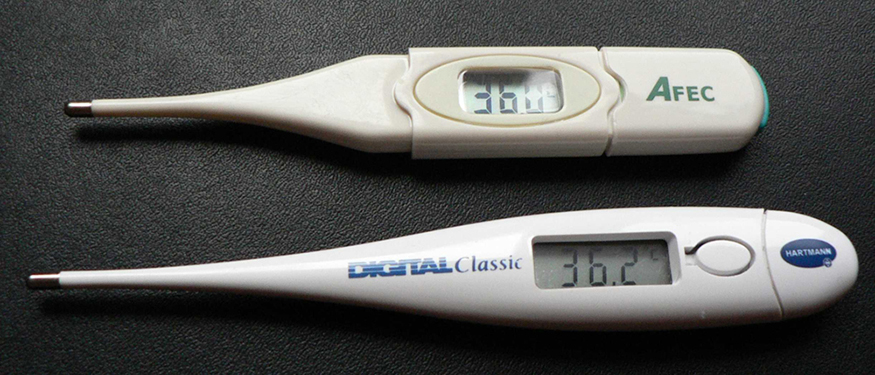| << Chapter < Page | Chapter >> Page > |
The resistance of an object also depends on temperature, since is directly proportional to . For a cylinder we know , and so, if and do not change greatly with temperature, will have the same temperature dependence as . (Examination of the coefficients of linear expansion shows them to be about two orders of magnitude less than typical temperature coefficients of resistivity, and so the effect of temperature on and is about two orders of magnitude less than on .) Thus,
is the temperature dependence of the resistance of an object, where is the original resistance and is the resistance after a temperature change . Numerous thermometers are based on the effect of temperature on resistance. (See [link] .) One of the most common is the thermistor, a semiconductor crystal with a strong temperature dependence, the resistance of which is measured to obtain its temperature. The device is small, so that it quickly comes into thermal equilibrium with the part of a person it touches.

Although caution must be used in applying and for temperature changes greater than , for tungsten the equations work reasonably well for very large temperature changes. What, then, is the resistance of the tungsten filament in the previous example if its temperature is increased from room temperature ( ) to a typical operating temperature of ?
Strategy
This is a straightforward application of , since the original resistance of the filament was given to be , and the temperature change is .
Solution
The hot resistance is obtained by entering known values into the above equation:
Discussion
This value is consistent with the headlight resistance example in Ohm’s Law: Resistance and Simple Circuits .
Learn about the physics of resistance in a wire. Change its resistivity, length, and area to see how they affect the wire's resistance. The sizes of the symbols in the equation change along with the diagram of a wire.

In which of the three semiconducting materials listed in [link] do impurities supply free charges? (Hint: Examine the range of resistivity for each and determine whether the pure semiconductor has the higher or lower conductivity.)

Notification Switch
Would you like to follow the 'College physics' conversation and receive update notifications?